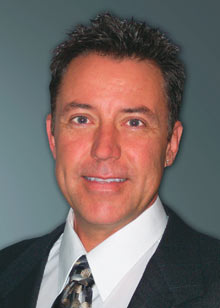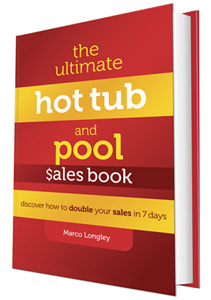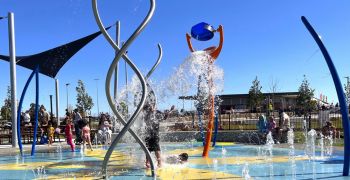 |
| Marco Longley Author of “The Ultimate Hot Tub and Pool $ales Book” |
2. Learn the ‘steps of the sale’ as these are the essential building blocks or sequence of events that are required to move your prospect towards making a buying decision. Learn the key steps of every selling situation and then commit them to memory and PRACTICE them until they are fully committed to memory.
3. Greet your customers properly. A relaxed professional greeting to welcome prospects into your showroom will go miles in building a great rapport, which is crucial to earning your prospects’ trust and confidence. Never ask, “Can I help you?” as the reply will often be, “No, just looking thanks.”
4. Establish concrete credibility. The prospect standing in front of you may genuinely never have heard of your store or be familiar with the products and services you offer. In 60 seconds or less, you should be able to explain to a prospect who you are and why they should do business with you and your store. You are losing business if you don't think providing concrete credibility is important.
5. Never ever start selling without understanding the exact needs or wants of your prospect. Completing a great discovery will provide you with valuable information and will build trust with your prospect. Far too many sales people often make the mistake of launching into a price presentation when asked ‘how much is this one’, instead of using the prospects’ question as a starting point to establish credibility. The more effective your discovery and understanding the needs and wants of your prospect, the more likely you are to close the sale.
 6. A successful presentation always comes down to WIIFM. ‘What’s in it for me?’ Your prospect will always have this question in the back of their mind when you mention that your product is the biggest, the fastest or the shiniest. During your presentation every feature, advantage and benefit (FAB) you mention must have value and benefit to your prospect. FAB statements are incredibly powerful sales presentation techniques that will substantially increase your sales when you successfully master using them.
6. A successful presentation always comes down to WIIFM. ‘What’s in it for me?’ Your prospect will always have this question in the back of their mind when you mention that your product is the biggest, the fastest or the shiniest. During your presentation every feature, advantage and benefit (FAB) you mention must have value and benefit to your prospect. FAB statements are incredibly powerful sales presentation techniques that will substantially increase your sales when you successfully master using them.7. Use Trial Closes often. Trial Closes are non-threatening questions that elicit your prospects’ opinions and feelings about what you have presented. In the absence of trial closes, how will you know how your prospect thinks or feels about what you have said, or worse yet, how will you know the right time to close the sale?
8. An objection is not a ‘NO’, unless you believe it is. Objections are often brought up when your prospect hasn’t understood something you have said or demonstrated. Without asking your prospect questions to better understand their objection or concerns, don’t be surprised if you hear "we need to think about it".
9. Always complete and effective follow up. Do you take the time after every missed sale and try to analyze what you felt went well and what didn’t? There are only two possible outcomes following every sales presentation: either your prospect purchased your products or they didn’t purchase your products. If they purchased, great follow up will ensure your owners are:
• Happy and satisfiedIn the event they didn’t purchase following your presentation, you still have a great opportunity to ‘close the sale’ at a later date, don’t let this one
• Unlikely to experience “buyer’s remorse”
• Happy to provide you with testimonials and future referrals
10. Practice your presentation and know your inventory until you can repeat it in your sleep. Walk your showroom floor every day and practice what to say and when to say it. By memorizing and constantly practicing your presentation you will eliminate ‘data dumping’ and randomly throwing out irrelevant information when you find yourself stuck for what to say next during your presentation. A ‘planned presentation’ is completely different to a ‘canned presentation’ as it allows you to side track into other discussions and then return to exactly where you left off in your presentation, ensuring you have not inadvertently missed key features or concepts.









